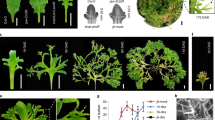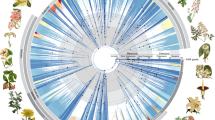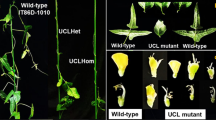Abstract
Alvin and Chaloner's criticism of my ideas about leaf venation patterns seems to be based chiefly on the distribution of vein junction types to the exclusion of associated vein island types. It is necessary to emphasize, therefore, that the glossopterid syndrome includes characters belonging to both of these categories. From the phylogenetic standpoint the important correlations are those between the complete syndrome and the major taxa: Angiospermae, Glossopteridae, Pteridospermae, Cycadales, Bennettitales and Caytoniales. Parts of the syndrome are lacking from all of these groups except the first two. What the critics do show is that similarities in the venation systems extend beyond that of open dichotomy—the Ginkgo and Circaeaster stage—as far as the Gangamopteris stage. We can agree to parallel evolution in these groups up to the Gangamopteris stage. Confining the discussion, for the moment, to leaf characters, there are some other features to be taken into account. The examples cited for the Pteridosperms, cycads and Bennettitales are all of leaflets of compound pinnate leaves, whereas the comparison was made between simple leaves in the Glossopteridae and Angiospermae. Compound pinnate leaves occur frequently in only about 20 per cent of angiosperm families and in many of these there is internal evidence of a derivation from simple leaves. One exception, the Quiinaceae, has already been commented on. The only other major exception is the Leguminosae in which the evidence is consistent with the persistence of compound leaves since the glossopterid phase of evolution.
This is a preview of subscription content, access via your institution
Access options
Subscribe to this journal
Receive 51 print issues and online access
$199.00 per year
only $3.90 per issue
Buy this article
- Purchase on SpringerLink
- Instant access to full article PDF
Prices may be subject to local taxes which are calculated during checkout
Similar content being viewed by others
References
Melville, R., Nature, 188, 14 (1960).
Plumstead, E. P., Trans. Geol. Soc. South Africa, 59, 211 (1956).
Plumstead, E. P., Trans. Geol. Soc. South Africa, 55, 281 (1952).
Author information
Authors and Affiliations
Rights and permissions
About this article
Cite this article
MELVILLE, R. Reply to Criticism of Hypothesis of Leaf Venation and Angiosperm Origins. Nature 226, 663–664 (1970). https://doi.org/10.1038/226663a0
Received:
Issue date:
DOI: https://doi.org/10.1038/226663a0
This article is cited by
-
Plant morphology in its nomothetical aspects
The Botanical Review (1973)



